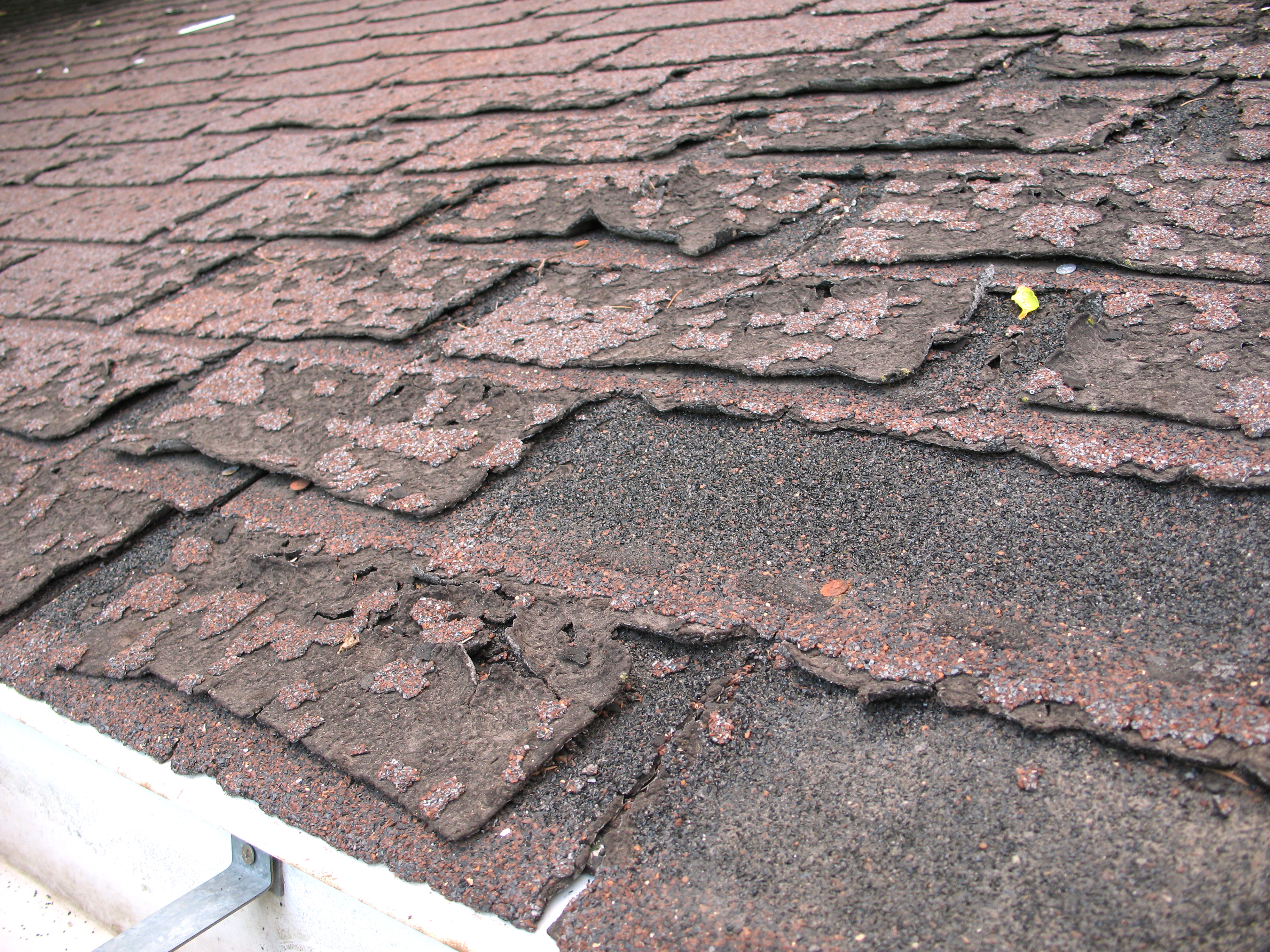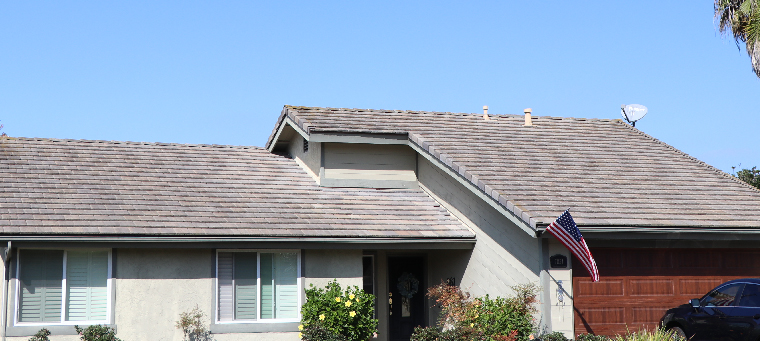Are you finally ready to get solar panels for your home? What an awesome decision! Top solar panels will help you slash your expensive energy bill and even help you do your part to protect this green-and-blue marble we call home. There’s just one teeny tiny speed bump on the road to glorious sunshine power.
Your roof.
Many homeowners eagerly start the process of solar installation only to discover that a roofing problem stops the project in its tracks. Don’t let roofing issues surprise you or your wallet! If your roof is damaged, aging, or simply not strong enough to bear the burden of your new solar system, then you’ve got to deal with that problem before you can go solar!
Why Your Roof Is the Secret Key to Your Solar Panel Installation
When you begin to research solar panels for your home, you will learn about all the different brands of solar panels available, as well as other important components of a photovoltaic system, like the inverter and the racking that holds the panels in place. Rarely is your home’s roof mentioned. That’s a shame, because your roof is a key component of your solar panel system.
Your solar panels need to go somewhere, and while some homeowners choose to install their solar panels on the ground or even on carports, the majority of solar panels are installed on the roof. That means a roof must be sturdy enough to handle the solar panels.
What you may not realize is that your roof is more than just a collection of tiles or shingles attached to the top of your home. A roof is actually a complex system made up of multiple layers that all work together to insulate your home and keep the elements out!
A standard roof is comprised of:
- Roof Truss
- Decking
- Insulation
- Ice and water barrier
- Underlayment
- Wood frame
- Shingles or tiles
If any component of these layers is damaged, it can weaken the entire structure of your roof and make it a bad idea to install solar panels. How do you know if your roof is damaged? Usually your roof will tell you!

How to Identify Roof Damage
You wouldn’t trust a chain with a weak link, right? That’s the same reason you shouldn’t install solar panels on a damaged roof. The most common types of roof damage are:
- Loose or broken tiles: This type of damage can easily be seen with the naked eye. Use a ladder to visually inspect your roof to search for loose or broken tiles or shingles.
- Worn down materials: Like all things, the components of your roof will simply wear out over time. Examples of age damage include bare shingles, shingle granules, and rust. As a roof ages, it becomes more fragile, and other problems are likely to quickly emerge.
- Water damage: When any component of a roof breaks down, water damage is soon to follow. Things like broken tiles, worn out sealants, torn underlayments, and more can result in water damage during the next rainstorm.
- Punctures and cracks: Trauma can crack the tiles of your roof or puncture the underlayment that is designed to keep out water. If something falls on your roof, if a roof installation is performed poorly, or even if someone walks on the wrong part of the roof, cracks or punctures can result!
- Standing water: Your roof is designed to efficiently shunt water off its surface, using its angled design, along with flashing and gutters. If you notice standing water on your roof, that indicates that something isn’t working.
- Structural damage: On rare occasions, the supports of your roof may shift, which can present a serious danger to you and your family. Roofs with structural damage are liable to collapse and must be addressed immediately!
Not all roof damage is easily visible and identifiable, but it will eventually make itself noticed. The most telling symptom of a damaged roof is water damage to your home. You may notice water stains on your ceiling, interior walls, or exterior walls. This may turn into ugly mold or even result in active leaks during heavy rainstorms.
If you notice any of these things, there’s a strong chance that your roof needs to be repaired or replaced before you even think of adding top solar panels.
Why Your Roof’s Age Matters
If you don’t see any water damage on your ceilings or get a free indoor shower every time it rains, does that mean your roof is fit and ready to handle solar panel installation? Not necessarily. One other factor you need to take into consideration is the age of your roof.
That’s right, your roof can get old and fragile, just like us humans. The lifespan of your roof will depend on a number of factors, including:
- Its materials
- Its environment
- How well you (or the previous owner) cared for it
Many roofs in California use clay tiles, which have a particularly long lifespan of nearly 50 years. Slate and copper roofs can last roughly the same amount of time. Wood shake roofs (which are more popular in the Northeast) have about a 30-year lifespan, while cement shingles tend to retire around 20 years. If you live in a particularly harsh environment, or if you’ve never resealed your roof or fixed noticeable damage, your roof’s lifespan may be cut short.
What does it mean if your roof is nearing the end of its life, and how does that affect your goal of installing solar panels for your home?
As the components of your roof wear out, tiles can be more vulnerable to cracking and the underlayment may easily tear. An old roof will not hold up well to drilling into tiles to install racking or carrying heavy solar panels. In fact, many older roofs were simply not built to handle the weight of solar panels.
Before you call up a solar installation team to give you a price quote on solar panels, figure out the age of your roof. Many of us haven’t lived in our homes for 30 or 50 years, so finding this information can be difficult. Look through your home’s paperwork to see if a roof replacement is mentioned in the disclosures or contact the previous owner if you have their information. If your home is less than 30 years old, chances are that the original roof is still in place.
If your roof is at or nearing the end of its lifespan, you will likely have to replace it before you can safely install solar panels.

Why It Makes Sense to Repair or Replace Your Roof Before Getting Solar Panels for Your Home
Let’s be honest. Repairing and especially replacing your roof is not an inexpensive prospect. If you were already planning to pony up a big chunk of money to install solar panels, the last thing you want to do is spend MORE money on your roof before getting your solar panels.
As hard as it is to swallow, however, repairing or replacing your roof may be the right thing to do, even if it delays your solar panel installation. Think about it this way – you would never build a home on a foundation of sand, right? Your roof acts as the foundation for your solar panels. The stronger and better the roof, the longer your solar panels can do their job.
If you try to cut corners and install solar panels on a damaged or aging roof, then you’re going to have to address those problems anyway in the future. Imagine how much more expensive it will be to have to call your solar installation company to take down your solar panels and then re-install them on your new roof. You’ll have to pay for the Roof Installation or replacement anyway, but doing it before installing solar panels on your home will save you lots of money and lots of headaches.
Here’s another thing to keep in mind. Your roof plays a big role in insulating your home. One of the reasons you may always have to crank up the heat in the winter and the air conditioning in the summer is because your roof isn’t able to trap that heat or air conditioning. A new roof will make your home more energy efficient, which may decrease the size (and price) of the solar panel system you need to power your home.
Here’s one more thing to consider. A new roof will increase the curb appeal of your home and increase its value, so some of that money you spent on fixing or replacing it will come right back to you when you sell.
Why You Should Choose a Company That Provides Roof Replacements and Solar Installation
You started this article just wanting to get solar panels for your home, and now you might to replace your roof too! That means you have to search out roofing companies in your area, schedule consultations, sign a contract, bring that team out… and then do it all over again for your solar installation contractor!
Yikes, that’s a lot of work!
It doesn’t have to be. Some solar installation companies also offer roof replacement services, including Semper Solaris. There are many reasons to work with just one company for your roofing and solar needs. First, you’ll save a lot of effort. It’s much easier to work with a single project coordinator than to research, assess, and hire two separate companies. Next, you’ll save time. It can take weeks to get on a contractor’s schedule. By combining projects, it will all be done be done together.
Probably the biggest benefit of working with a single company for roofing and solar is that you can enjoy significant cost savings. At Semper Solaris, combining a roof replacement with solar installation allows us to be as efficient as possible. We are happy to pass those cost savings back onto our customers. We can even offer you financing options to make your roof replacement and solar panel installation more affordable.
Sometimes getting solar panels for your home means repairing or replacing your roof first. With Semper Solaris, we can take on your full project and get solar panels on your new, sturdy roof before you know it. Contact us today to schedule a roof and solar consultation.
